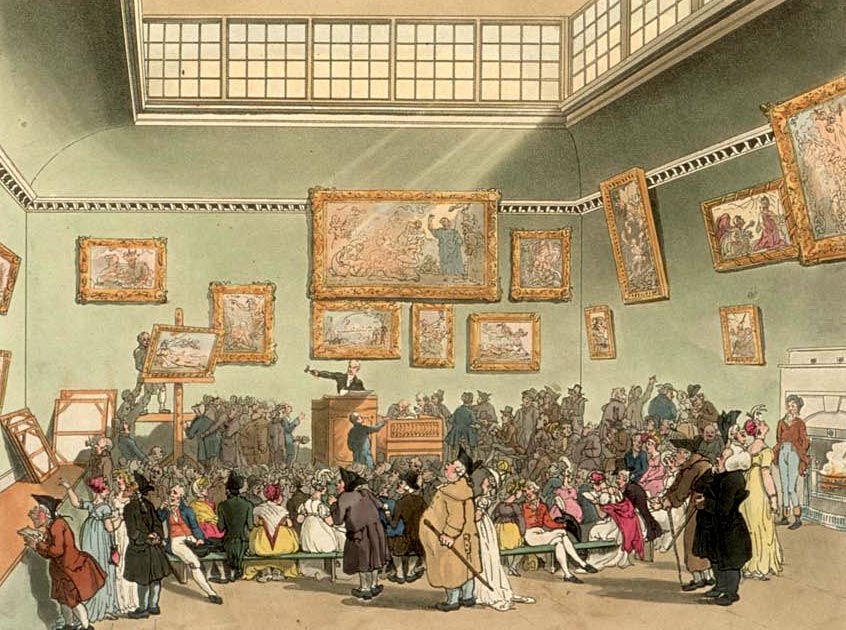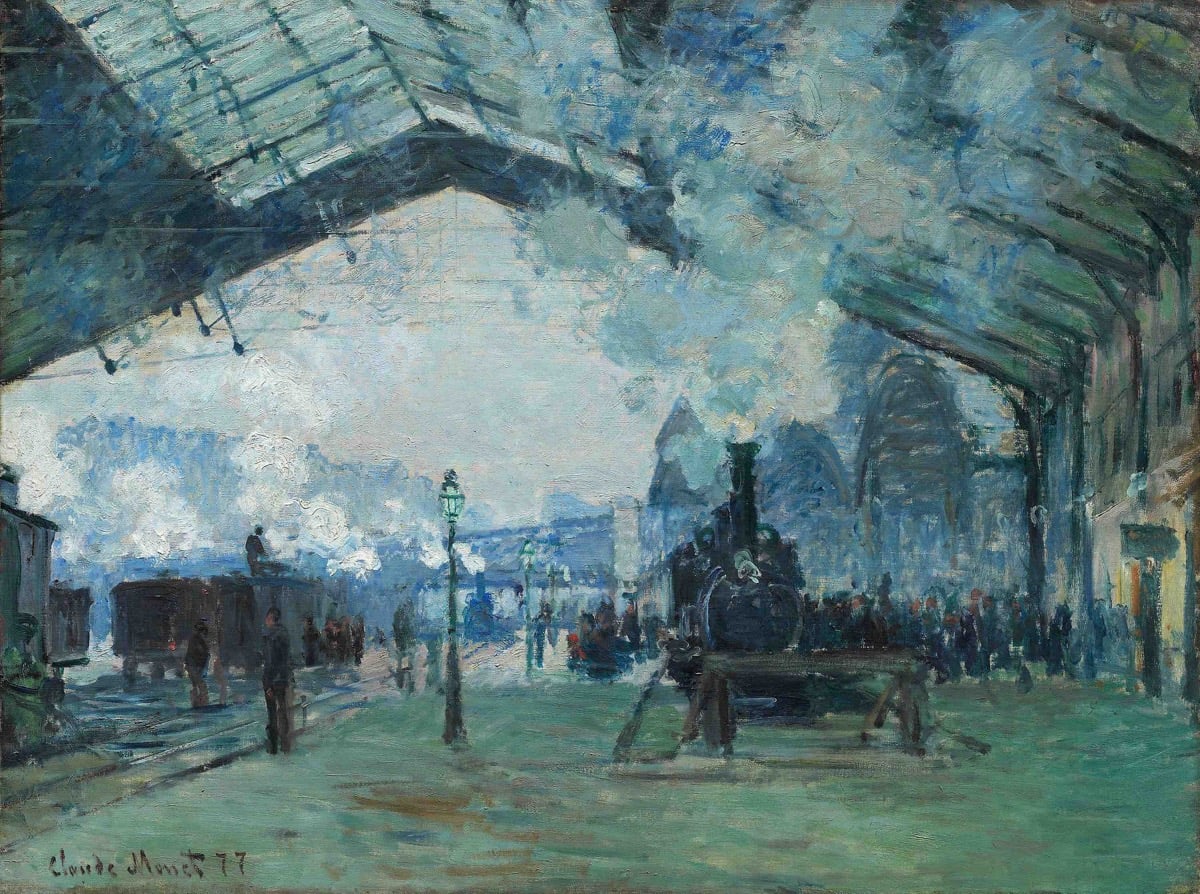How to unlock China’s true potential as an Art Powerhouse



Guy-Louis Vernansal "The Emperor Sailing, from The Story of the Emperor of China" (1716-1722) via the Art Institute of Chicago.
During the epic guessing game that engulfed the art world after Leonardo da Vinci's "Salvator Mundi" broke the world record hammer price in 2017 with a $450-million sale, many turned their heads towards China looking for the mysterious buyer.
The purchaser of the 500-year-old artwork from the Renaissance master turned out to be a Saudi royal, but the fact that many Chinese collectors were in the pools highlights the growing importance of the Asian giant in the art market.
And this is not just a multimillion-dollar anecdote. China's emergence as a new art powerhouse is having reverberating across the whole sector and its players, from artists to auction houses to collectors. And even more importantly, Chinese demand has had a significant impact in turning Fine Art into a really global asset class.
 Leonardo Da Vinci "Salvator Mundi" (1500).
Leonardo Da Vinci "Salvator Mundi" (1500).Massive demand from billion of eyes
Last year, art outperformed the stock markets and bonds as the best investment, surpassing every other luxury items, including wine, classic cars, and diamonds, as highlighted by the Wall Street Journal. Based on estimates of total return, investors who bought into the S&P 500 in 2018 lost 5.1 percent (by the end of November), those who bet in cash equivalents gained 1.9% and those holding gold lost 2.2%. Meanwhile, art investors saw an average gain of 10.6% by the end of November, according to Art Market Research's Art 100 Index.
Why?
There is no simple answer. But if we are looking for the main driver, J. Tomilson Hill, vice chairman of Blackstone and one of the world's top art collectors, has a simple explanation: Chinese museums.
That is still only a fifth of the number in the United States, but China is opening hundreds of new ones every year. By contrast, in the U.S. only 20-40 museums a year were built in the decade before the 2008 financial crash. The China factor is why Hill is confident the art market won't cool or crash anytime soon.
"So there is a massive demand for interesting things to either look at, to talk about," Hill told CNBC during its Net/Net Conference.
“So there is a massive demand for interesting things to either look at, to talk about.”
Art as a strategic industry
This momentum has not originated out of thin air nor is it an accident. Instead, it is yet another sign of economic, political and cultural power shifts from the United States and Europe to Asia. With Peking seated at all major decision-making tables around the world, it was just a matter of time before its arrival at the art industry's leaderboard.
In China, the system favors bold competition among local governments for budgets, business, and recognition. So art and culture investments have become a playbook move to gain influence, attract tourism and increase the city's soft power in the complex political Chinese framework.
In the last decade, China went from accounting for just 9% of total global art sales to 21% in 2017, overtaking the United Kingdom as the second largest art market worldwide after the United States -which is still the indisputable leader with 42% of sales by value- according to the 2018 Art Basel USB Report. China climbing up another step on the art market podium in 2017 coincided with a global resurgence in sales, which grew 12%, totalling $63.7 billion, following after two straight years of decline.
The turning point came a decade ago in 2009 when China's share in art global sales doubled in the aftermath of the 2008 global financial crisis. That year, a State Council meeting upgraded culture to the level of a strategic industry.
Billionaires hunting for treasures
The turning point came a decade ago in 2009 when China's share in art global sales doubled in the aftermath of the 2008 global financial crisis. That year, a State Council meeting upgraded culture to the level of a strategic industry.
The boom in public-museum building was mirrored by the private sector, where rich collectors and corporations have been increasingly acquiring masterpieces that demand being put on display in more appropriate showcases.
In 2013, real-estate company Wanda Group made headlines in the art world by paying $28.2 million for Pablo Picasso's "Claude et Paloma" at a Christie's auction in New York, the highest price paid for Western art by a Chinese collector at the time. A year later, Chinese media mogul Wang Zhongjun pulverized that mark paying $66.3 million for Van Gogh's "L'allee des Alyscamps" at a Sotheby's auction. That same night, he spent another $29.9 million for Picasso's "Femme au Chignon un Fauteuil."
 Pablo Picasso "Claude et Paloma" (1950) via Christies.
Pablo Picasso "Claude et Paloma" (1950) via Christies.Again, it would be a short-lived record. In 2015, Liu Yiqian, another Chinese billionaire tycoon, purchased "Reclining Nude," one of Amedeo Modigliani's best-known works, to put in his new Shanghai museum for $170 million. At that time, the sale made the painting the second most expensive artwork ever sold at auction, just shy of Pablo Picasso's Women of Algiers (Version O), which sold earlier that year for nearly $180 million.
Transparency to evolve
But there is one bleak spot in this idyllic landscape of soaring art prices, museum-openings, and public corporations and unconventional billionaires interest in Western Fine Art. The assets volume managed by Chinese art funds has declined to $373 million by the first half of 2017, a whopping 75% fall since its peak in 2012, according to Deloitte-ArtTactic Art & Finance 2017 report.
This could mean that investment fund activity is increasingly taking place under the radar. "The risk associated with this trend is that seems to move art investment underground and away from the scrutiny of the public eye. Although this may have certain advantages in terms of anonymity and discretion, it heightens what most shareholders view as the greatest risk associated with the art market: a lack of transparency (...) One thing is clear: the art fund industry is unlikely to evolve until transparency, credibility, and trust are restored," stated the Deloitte report.
Maecenas solution to the art market
And that's where Maecenas' solution can make the difference, opening the art market to Chinese investors and high net worth individuals hungry for alternative assets that yield both returns as well as exposure to what they refer to as "cultural consumption."
The Maecenas platform combines the power of tamper-proof blockchain technology for building trusted economic ecosystems with fine art market expertise to offset the risks and costs involved with verification, insurance, storage, and maintenance. Maecenas provides global investors, family offices, institutions and collectors a transparent and simple way to diversify their portfolios with top-rated fine artworks all while paying some of the lowest fees in the market.
- At the same time, Maecenas offers galleries a safe and efficient way of leveraging their art assets by auctioning some of their artwork.
- Maecenas art experts conduct a strict due diligence process to verify the authenticity, provenance and physical condition of the piece with the support of independent and reputable third-parties.
- The team takes care of all the process, including the insurance and storage of the artwork, putting all the related documents on the blockchain ledger to ensure that they are impossible to falsify once they are on the platform.
Furthermore, our tokenization process, in which we provide fractional ownership of masterpieces, is challenging art market entry barriers and providing the much-needed liquidity the industry needs. In September, Maecenas' auction of Andy Warhol's "14 Small Electric Chairs (1980)" attracted more than 800 interested investors from 56 countries. The sale successfully raised US$1.7m for 31.5% of the artwork at a valuation of $5.6 million from the final 100 selected participants. And that was just the beginning. The next auction, planned for the coming months, will result in the digitalization and tokenization of a Picasso artwork in a fully decentralised process. Later this year, we also plan to launch our trading platform, an open and public marketplace to trade shares in masterpieces in a more liquid, accessible and fair ecosystem for art investors.
Making art a safer, easier and more transparent alternative investment will benefit the whole art industry as Chinese citizens with growing purchasing power will copy Chinese financial elite choices. And in doing so, we will really unleash the true potential of 1.4 billion people in China as the new art powerhouse.






